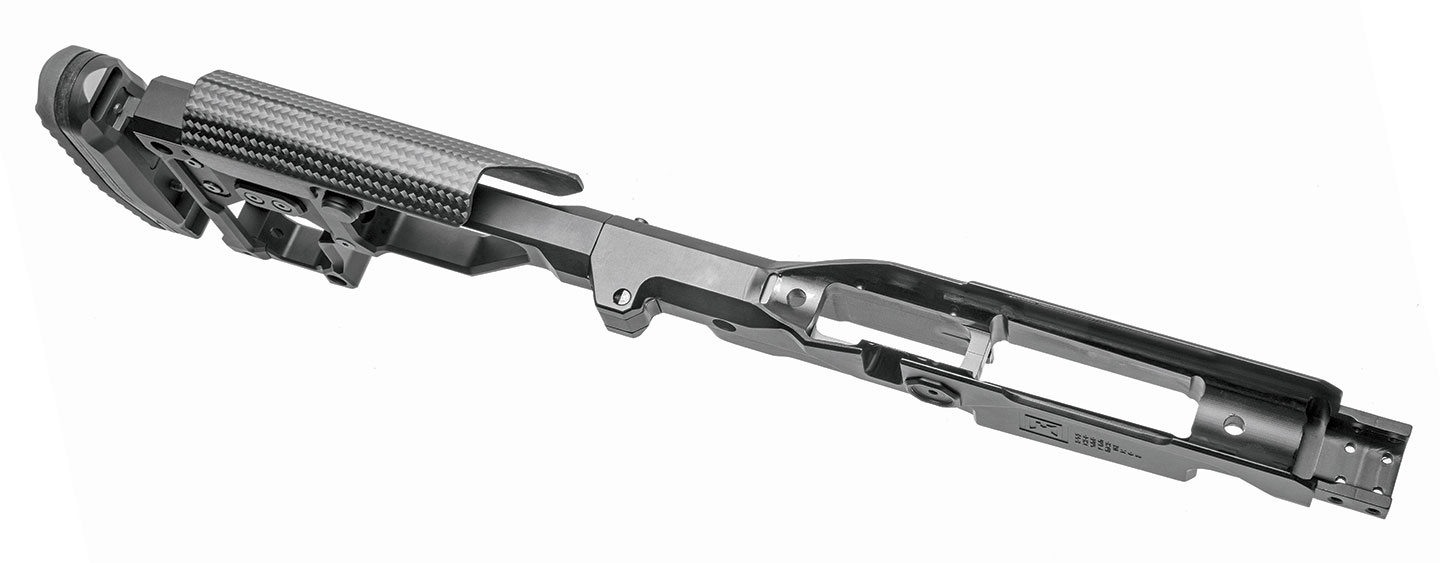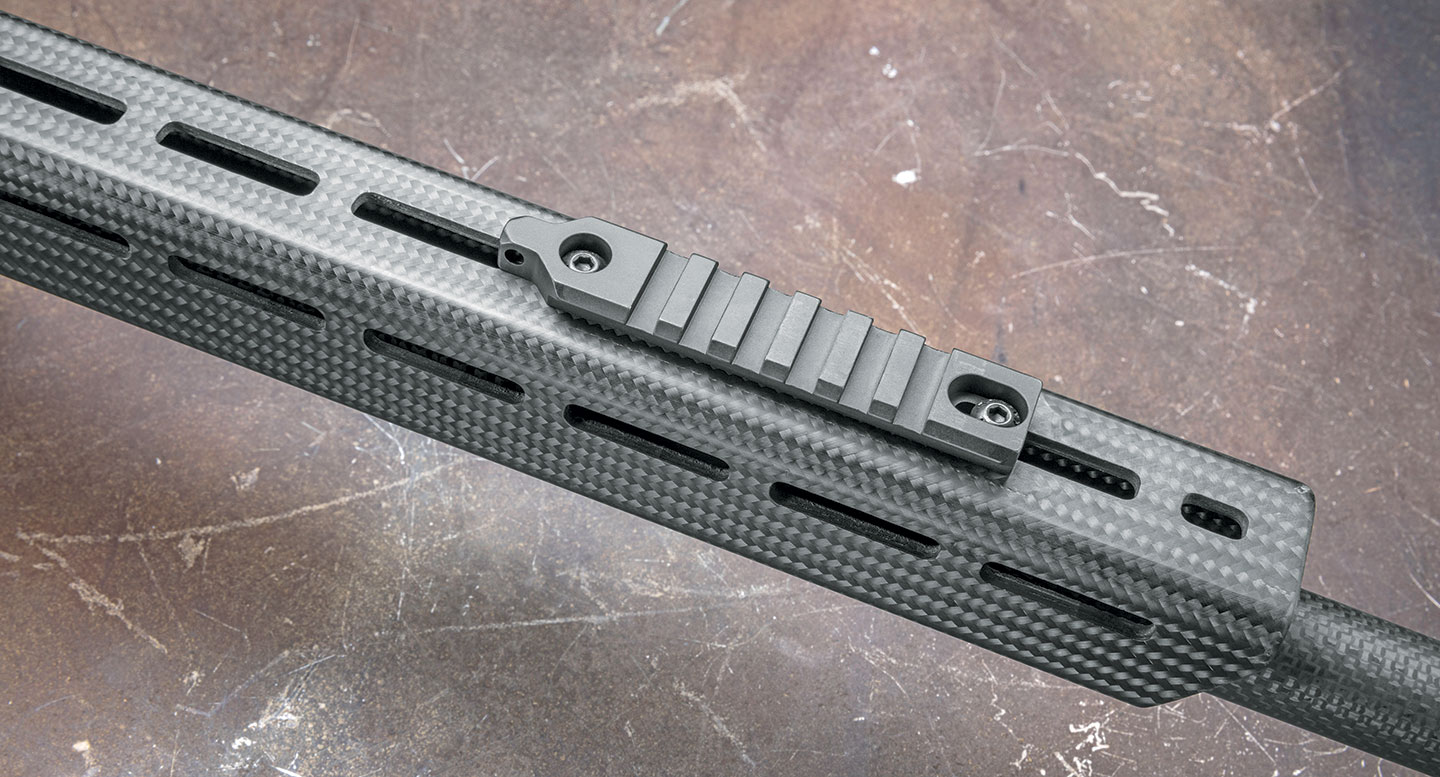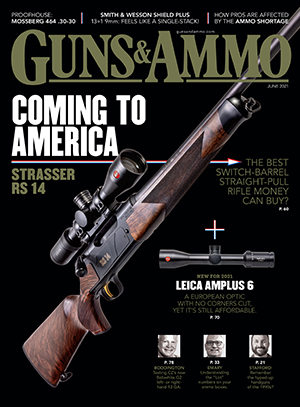Christensen Arms Modern Precision Rifle 338 Lapua Review

October x, 2018
Finding a rifle that does everything well has been a fool'due south errand historically. For hunting, rifles need to be lite and accurate. On the other mitt, contest rifles need to offer flexibility while retaining accuracy beyond 10- or 20-shot strings, usually at the expense of additional weight. There has been no solution to this impasse — until now.
Christensen Arms' new Modern Precision Rifle (MPR) combines all of the features above into one very manageable burglarize. Depending on chambering, the MPR is everything from the ultimate generalist's burglarize to a highly effective and portable long-range tool.
The Balancing Human activity
Every rifle comes with a set of features that may or may not use to the intended application. When in dubiety, almost consumers default to the "more is better" philosophy, which usually adds expense and weight.
What makes the MPR and then unique is that Christensen Arms kept just about every feature you would desire on a rifle without making it excessively heavy. They were able to do this through utilise of carbon fiber and significant blueprint work.
Carbon fiber is as diverse a cloth equally metal. Just equally there are an most innumerable variety of metals and alloys, there are different types of carbon cobweb and binding agents. There are varying techniques to shape and lay the cobweb, with each method yielding dissimilar results.
As many readers already know, Christensen Arms is no rookie in the earth of carbon fiber. Dr. Jason Christensen got his get-go in the medium several decades ago while making rocket fuselages and aircraft panels. He began experimenting with the material and rifle barrels back in the 1970s.

The MPR'southward barrel is fabricated entirely in-firm. Christensen starts with stainless steel bar stock, drills the hole for the bore, and so pulls a rifling button through it. The barrel blank is and so contoured to a small-scale diameter contour and and then wrapped in carbon cobweb. The butt contour is already very light prior to wrapping and is safe to fire without the carbon-fiber treatment.
There are different fibers and methods used on the butt. Since carbon fiber is a much better conductor of heat than the steel it surrounds, some fibers are laid with an stop butted up against the exterior of the barrel'south throat. These fibers effectively suck the oestrus from this portion of the barrel and aqueduct it down the barrel and out near the muzzle. This helps to proceed some of the mirage out of the scope past putting distance betwixt the objective lens and the rut that the barrel generates.
The remaining fibers around the barrel add rigidity. The problem that skinny barrels confront is that they lose rigidity when they get hot. This is why heavy barrel contours are popular with precision shooters. As they heat, they hold onto accurateness longer.
Original Chassis
While the changes in the butt lonely let Christensen Arms' MRP shoot alike to a heavy match rifle, it would be egregious to overlook the exceptional work that the visitor did with the chassis. Information technology's a phenomenon that they were able to make such a light chassis while retaining the ability to offer easy adjustments to both length of pull and comb elevation.

Adjusting comb meridian and length of pull are vital elements to precision rifle shooting. A poorly fit burglarize is uncomfortable and requires muscular tension to stay on target. Requiring muscular tension to hold the rifle on target leads to increased instability and fatigue on its user. As soon every bit the shooter's head moves off the comb, it then takes effort to keep the eye centered directly behind the telescopic. This is 1 more than detail to think about that keeps the shooter from focusing on other fundamentals.
The other damaging aspect of a rifle that doesn't fit well occurs during recoil. If the shooter's head is floating above the comb in order to run across through the scope (which is what happens on just about every rifle that doesn't have an adaptable comb), it'due south almost incommunicable to see the round impact or miss the target.
Being able to spot the circular's impact is vital. Not but do you want to know whether or not the bullet struck its intended mark, you need to know what adjustments are necessary for a successful follow-up shot. If the shooter can't see where the bullet went, he'll always exist at the mercy of a sentry or friend to provide that critical information. This means it'll have two shooters with their heads on direct to exist effective in the field instead of but one with a proficient burglarize.
Adjusting the length of pull and comb tiptop on the MPR is pretty straightforward. 2 screws loosen to allow either the buttpad or comb to slide back and forth or upwardly and down, respectively. Tighten the screws when you find your sweet spot. The chassis' toe is apartment and threaded to accept a section of Picatinny runway for use with a monopod, if yous're into that type of thing.

The chassis folds and is held firmly in identify with a strong magnet. It is a uncomplicated yet elegant arroyo. The older I get, the more I'one thousand interested merely in chassis systems that fold. Moving the buttstock out of the manner makes cleaning the rifle easier. I also love the convenient ship and storage that a folding chassis allows.
The forend on the MPR is my favorite of whatever rifle I've tested — ever. It's long plenty for whatever and all types of positional shooting. Throwing this forend across an oddly shaped rock pile or reaching for an ideally placed limb to apply every bit a rest to stabilize the rifle is a snap due to the forend'due south length. It is also flat on the bottom so any and all rests have a lot of surface area to contact. All the corners are rounded and the overall contour is slender, making this forend extremely comfortable in the support hand. Numerous M-Lok slots are located on the sides and bottom of the forend for attaching any accessory that a shooter requires.

Meat & Taters
The center department of the chassis is an aluminum housing that attaches the barrel assembly to the forend while simultaneously supporting the action. It is the classic chassis arrangement.
Christensen Artillery put a lot of try into minimizing the chassis' bulk and weight. The heart section that supports the action is minimalist and very low contour. They did put a lip just forrad of the mag well, which allows the shooter to push the chassis into the forend residual to help proceeds actress stability.
Removing the barreled action from the chassis is easy. Eight small screws hold the forend to the aluminum center department. Remove them and the forend comes off. A minor screw behind the triggerguard comes out allowing the triggerguard to slide forward out of the chassis, exposing the rear action screw. Remove both and the barreled activeness comes right out.

The action has a Remington 700 footprint and a detached recoil lug. The bolt torso has an M16/AR-xv-fashion extractor that rides atop the outboard lug, while the ejector is located opposite the same commodities lug. Extraction during testing was flawless, but rounds exiting the ejection port left at an up angle that may contact the scope'due south windage turret with long-action cartridges.
The entire action body is stainless steel that has been nitrided. It is very corrosion resistant.
The brusque-action model comes with a 20-MOA bias scope base equally standard, but the MPR accepts Remington 700 bases, so swapping out the base for a two-slice or not-biased rails is no trouble.
The trigger that comes on the MPR is a standard-model TriggerTech. It has a apartment bow that gives the perception of lighter pull weight and is adjustable from 11/2 to 4 pounds.
Hands On
I spent a couple days shooting the MPR in six.5 Creedmoor. The rifle's accuracy during testing was both fantabulous and consistent. Best groups hovered right around .v MOA for five shots at 100 yards for all loads tested and everything else still averaged well under 1 MOA. It is of import to note that I did not terminate to let the butt absurd during accuracy testing (other than walking down to look at the target or to load the mag). Hornady was the last load I used in G&A's exam rifle.
The determination not to let the barrel cool was deliberate. I don't like to give any one burglarize the advantage of an actress-long cooling session between groups considering information technology will likely upshot in an accuracy improvement, regardless of barrel type. I feel that starting the testing session with a good bore scrubbing and so letting the barrel absurd completely between groups would have sawed another .one to .ii inch off the group sizes.

With the results of our tests, I retrieve the MPR comes closest to emulating the term "do-everything" than any other rifle that I've come beyond. If I could pick simply one rifle to use for dinging steel with my buddies to humping up the side of a mountain for elk, the MPR would exist information technology. Its combination of light weight and a complete set of relevant features puts this 1 in a grade past itself.
Christensen Artillery Modern Precision Burglarize

Savour manufactures like this?
Subscribe to the magazine.
Become access to everything Guns & Ammo has to offer.
Subscribe to the Mag
Source: https://www.gunsandammo.com/editorial/review-christensen-arms-modern-precision-rifle/316612
0 Response to "Christensen Arms Modern Precision Rifle 338 Lapua Review"
Post a Comment